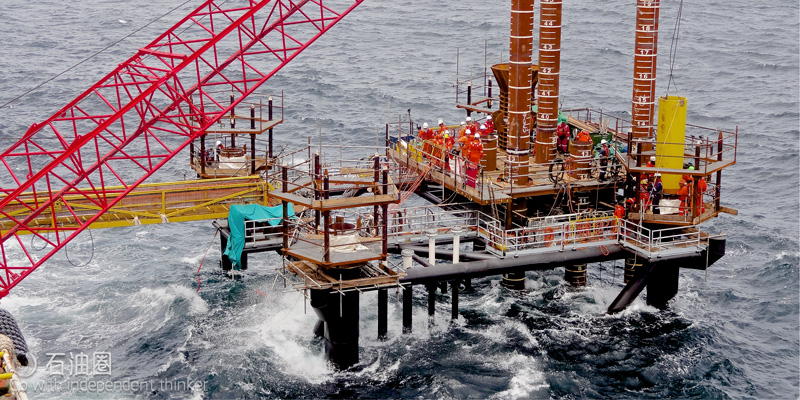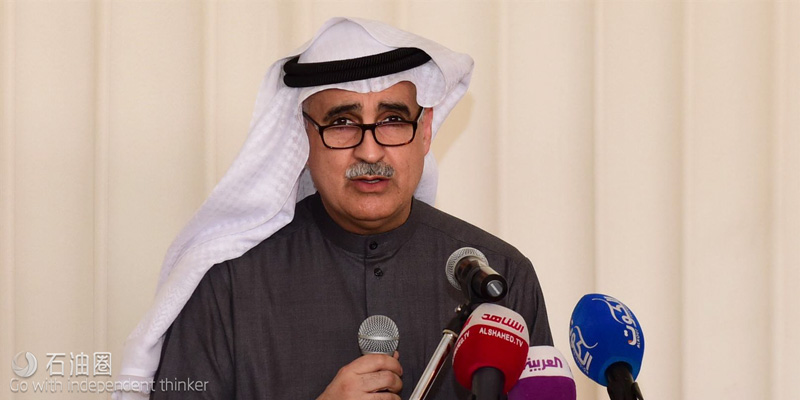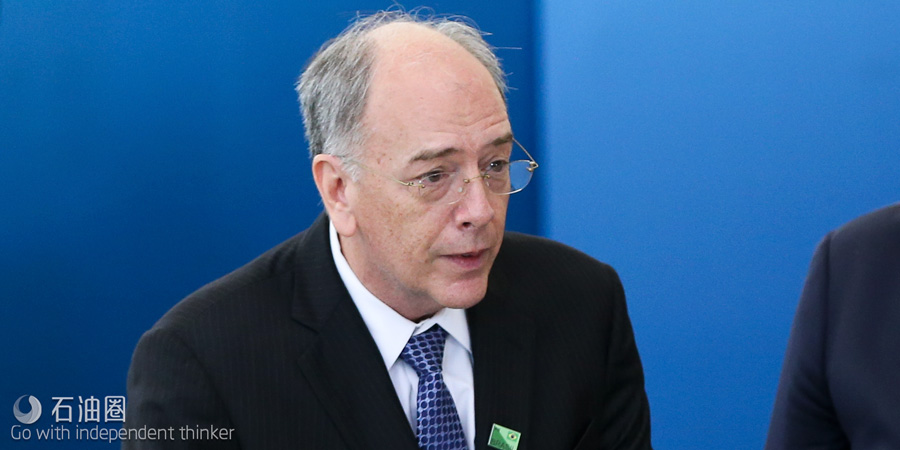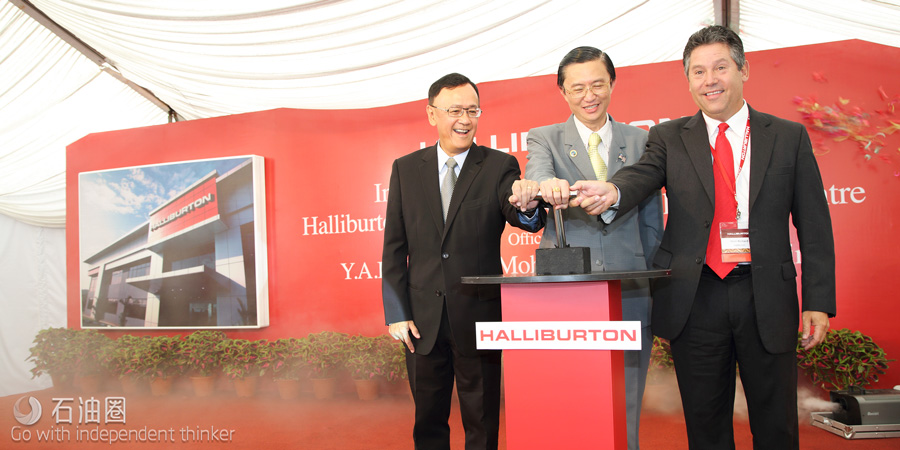KPC CEO: Enormous Demand for Oil Forecasted in 2019-2020
There will be an ‘enormous demand’ for oil in 2019-2020, which will see a spike in prices, according to Nizar Al-Adsani, chief executive officer of Kuwait Petroleum Corporation (KPC).
The demand will arise as a result of the lack of investment in the upstream industry during the downturn, Al-Adsani told oil and gas delegates during an Offshore Technology Conference presentation, held in Houston, Texas.
“I think you will see … probably $70-$80 [per barrel] … given that lack of investment in 2015-16 that will catch up with us in 2019-20,” Al-Adsani.
The KPC CEO also forecasted that the sector won’t see prices of $100 per barrel again, but said that prices of somewhere between $50 and $60 per barrel were comfortable for consumers, producers, international oil companies and shale producers alike.
“There is a mindset now that prices of $100 will not be there anymore, so that’s a given,” Al-Adsani said.
“I think we will live through somewhere between $40 and $60 in the short term … from now until the end of the year,” he added.
Petrobras CEO Says Oil Price Slump Won’t Hinder Asset-Sale Plan
HOUSTON/SAO PAULO, May 2 (Reuters) – Oil’s lackluster price performance this year is unlikely to hamper Petróleo Brasileiro SA’s plan to divest up to $21 billion worth of assets or find partners for exploration and refining by the end of next year, Chief Executive Officer Pedro Parente said on Tuesday.
Speaking at the Offshore Technology Conference in Houston, Parente said Petrobras has already made money in an unstable oil price environment, which could lure partners for certain businesses or projects. Rio de Janeiro-based Petrobras is Brazil’s state-controlled oil company.
Parente remains confident that Petrobras will be able to divest assets in segments from oil exploration and production to fuel retailing, meeting the year-end 2018 asset-sale and partnership target comfortably.
“We can only improve by having partners helping us to get more benefits … I don’t see why the current oil price environment would create risks for our divestment plan,” he said on the sidelines of the conference.
His remarks sought to allay concern that a volatile oil market could slow or thwart plans to downsize Petrobras, the world’s most indebted oil company. After starting the year on a rally, oil prices have slumped as rising crude output in the United States and elsewhere has somewhat offset production cuts by Saudi Arabia and other major exporters looking to reduce a global crude glut.
Brent crude oil prices fell on Tuesday to their lowest level in more than five months, erasing all the gains since the Organization of Petroleum Exporting Countries began output cuts last November. Brent futures fell $1.06, or 2.1 percent, to settle at $50.46 a barrel, the lowest close since Nov. 29 – the day before OPEC agreed to cut supply.
Investors cut their net-long position in Brent oil, the crude benchmark most widely used for pricing by Petrobras, by 69,167 contracts to 358,266 in the week ended on April 25. That was the lowest since November. Net-long positions measure the difference between bets of a price increase and those of a price decline.
Parente cited geopolitical tension in the Middle East, sizable legal contingencies and missing asset-sale goals as potential risks for Petrobras’s financial and operational case going forward.
He wants Petrobras to focus on cutting costs as much as other Latin American oil companies are doing. At the end of 2016, the company’s lifting cost per barrel went down to $10.3 per barrel from $11.7 a barrel in 2015.
OTC Commentary: Industry must address uncertainty, efficiency and reliability
I have been involved in deep water exploration and development for a great deal of my career. Growing up in Louisiana, I witnessed market cycles first hand.
From my start as a wireline logging engineer through roles in the Gulf of Mexico, Asia Pacific and beyond I’ve learned that every cloud indeed has its silver lining and the same can be said for the current deep water market. As offshore activity slowly starts to improve, our industry’s relentless focus on efficiency and cost reduction during the latest downturn will likely become the standard for our future business.
Deep water development is very complex and often dominated by the largest players. The costly and time-intensive nature of the projects requires long-term planning and a different way of thinking compared to onshore plays. This market is not for everyone, but for those who have survived the downturn, three things must be foremost in our minds: reducing uncertainty, increasing reliability and increasing efficiency.
Halliburton believes solving each of these challenges will be critical to helping our customers maximize production in deep water wells in a recovering market.
Reducing uncertainty can be achieved in a number of ways, including the use of more advanced technologies to acquire accurate and reliable reservoir insight that will allow operators to hit the sweet spot in a reservoir. When it comes to drilling techniques, for instance, having the ability to guide the bit with precision into the right area adds value to our customer assets, and managing the entire process remotely reduces our costs.
For increasing reliability, it is important to integrate services and automate more functions to continuously improve completions design and generate more value for our customers. For instance, Halliburton offers the HCS AdvantageOneTM Offshore Cementing System, an OTC Spotlight on New Technology Award-winning technology that automates the concentration of liquid additive and constantly measures inventory and delivery rates to help ensure accurate job execution.
Finally, to increase efficiency, Halliburton collaborates with our customers to help them optimize well construction, manage low-equivalent circulating density and maintain wellbore stability. Managed pressure drilling (MPD) allows us to properly navigate the challenging pressure windows between pore and fracture pressure found in complex wells. Drilling with MPD gives operators the ability to rapidly adjust bottom hole pressure to help lower the risks associated with mitigating kicks, losses and wellbore stability issues.
Halliburton offers the GeoBalance® MPD services to help operators maintain control and manage pressure related challenges confidently for minimizing risks and reducing non-productive time.
Until the deep water market recovers, the number of projects will continue to be limited and the ability to successfully deliver these wells will require continued innovation. We must continue to collaborate with our customers to lower the cost of deep water projects for the long term.
As we look to the future, we will continuously seek to reduce the uncertainty around these challenging projects, improve our reliability and increase the efficiency with which we execute to lower the breakeven cost for our customers. We see the deepwater market slowly coming back to life, but the future will depend on our ability to develop new and more efficient ways of operating in this environment.
Going forward, the way we listen and respond to our customers’ needs and the way we look for continuous improvements will drive not only our ability to recover, but to thrive.
Mark Richard is senior vice president of Global Business Development & Marketing for Halliburton.
OTC Commentary: Collaboration could help deepwater stay competitive
As thousands of people descend on Houston next week for the Offshore Technology Conference 2017, one of the questions on their minds will be: Can complex, deepwater projects compete for capital in a world where shale offers lower development costs and shorter production cycles?
The answer is yes. Even in these times when shale and tight rock resources are grabbing headlines as the lowest-cost option for new oil production in the United States, deepwater resources still represent significant opportunity.
We know deepwater resources are prolific and that we have the technology to develop them safely and responsibly. But to remain relevant in a highly competitive environment where lower oil prices are putting pressure on firms to cut costs and find efficiencies, the deepwater industry should focus on another key factor in the equation: returns.
Deepwater production can be profitable in the current oil price climate. But there are steps we must take as an industry to ensure the cost per barrel declines.
At the top of the list is collaboration. Where intellectual property is not a competitive advantage, there is a huge opportunity to improve how we work as an industry to monetize resources that will benefit multiple companies. In discussions with many of our peers, for example, we know that collaboration in research and development of deepwater technologies and solutions can be cumbersome, administratively overburdened, costly, and long-lead. We need to simplify.
Second, we need to get on the same page about standardization. The oil and gas industry can learn from the car and aircraft-manufacturing sectors that have driven costs down by adopting standardized components and systems. Where appropriate, we should simplify and agree on common systems and methods, leaving aside the idea that every project needs a unique solution. We don’t need to re-invent the wheel at every turn.
Third, we must remember that, as an industry, we are bound to rise or fall together. If the cost of goods and services squeezes operator margins too much, there won’t be any projects for anyone. On the other hand, operators need to understand what suppliers require to remain viable themselves.
And we all should work closely with host governments to ensure that regulations and fiscal regimes are meeting their necessary objectives while still allowing for project success and a reasonable rate of return.
Around the world, peoples’ standard of living is improving as more and more enter the global middle class. But to continue this trend, and to enable future innovation and progress, the world will need reliable, affordable energy from all available sources, including deepwater.
While substantial, shale resources alone will be insufficient to meet demand. U.S. shale supplies only about a quarter of the 19 million barrels of oil per day consumed in the United States and a mere fraction of the 97 million bbl/d global demand.
The deepwater industry needs to build on the lessons we have learned and realize the value of collaboration. Old, established paradigms may no longer apply.
Stephen P. Thurston is vice president of Deepwater Exploration and Projects Business Unit Chevron North America Exploration and Production Co.


 石油圈
石油圈



